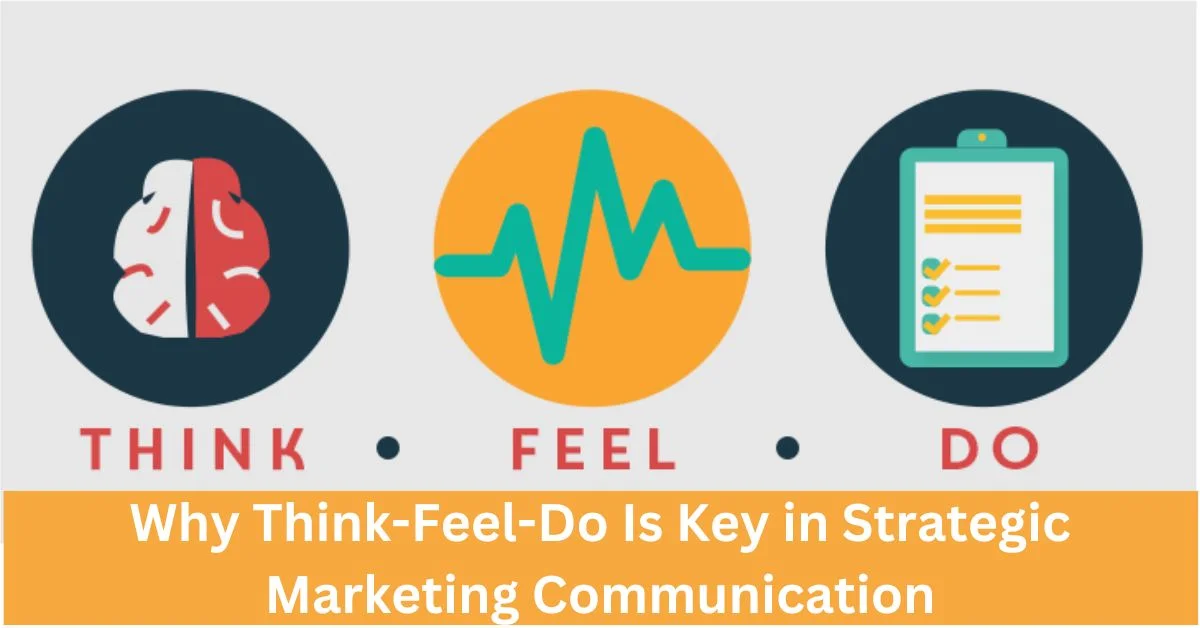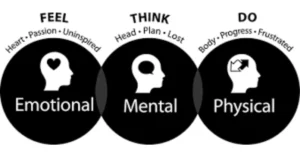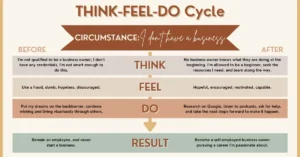Education
The Benefits of a Stoic Presence in Personal and Professional Life

Introduction
What is a Stoic Presence?
A stoic presence refers to the calm and composed demeanor that is a hallmark of Stoic philosophy. This approach emphasizes emotional resilience, rational thinking, and the ability to remain unshaken by external circumstances. It draws from ancient Stoic teachings which advocate for a life of virtue and inner peace despite external chaos.
Why is a Stoic Presence Important?
In our fast-paced world, maintaining a stoic presence can be transformative. It allows individuals to navigate life’s challenges with grace, making it a valuable trait both personally and professionally. Understanding the benefits of a stoic presence helps us appreciate how it can enhance our quality of life and improve our interactions with others.
Principles of Stoic Philosophy
Core Tenets of Stoicism
Control and Acceptance
At the heart of Stoicism is the principle of distinguishing between what we can control and what we cannot. By focusing only on our actions and reactions, we accept external events without allowing them to disturb our inner peace.
Virtue and Rationality
Stoicism teaches that virtue and rationality are the highest goods. Living virtuously involves acting with wisdom, courage, justice, and temperance, which helps in maintaining a stoic presence.
Historical Context
Origins of Stoicism
Stoicism originated in ancient Greece with philosophers like Zeno of Citium, Epictetus, and Marcus Aurelius. Their teachings focused on achieving a life of virtue and tranquility through rational thought and emotional control.
Evolution of Stoic Thought
Over the centuries, Stoic philosophy has influenced various fields, including psychology and self-help. Modern interpretations continue to apply its principles to contemporary challenges, making it relevant in today’s world.
Benefits of a Stoic Presence in Personal Life
Emotional Resilience
Managing Stress and Anxiety
A stoic presence helps in managing stress and anxiety by fostering a mindset that remains calm under pressure. By focusing on what we can control and accepting what we cannot, we reduce unnecessary worry and maintain emotional stability.
Improving Relationships
Maintaining a stoic demeanor improves relationships by minimizing emotional outbursts and promoting thoughtful communication. It encourages us to respond to others with empathy and understanding, rather than reacting impulsively.
Enhanced Decision Making
Rational Thought Processes
With a stoic presence, decision-making becomes more rational and less influenced by emotions. This clarity allows for more objective assessments of situations, leading to better choices and outcomes.
Long-term Perspective
A stoic approach promotes a long-term perspective, helping individuals focus on their goals and values rather than getting bogged down by temporary setbacks. This perspective supports perseverance and long-term success.
Benefits of a Stoic Presence in Professional Life
Increased Workplace Efficiency
Handling Workplace Stress
In a professional setting, a stoic presence helps in managing workplace stress by promoting a calm and composed approach to challenges. This mindset enhances productivity and effectiveness.
Navigating Office Politics
A stoic demeanor helps in navigating office politics by maintaining professionalism and emotional detachment. This approach fosters a positive work environment and reduces conflicts.
Leadership and Influence
Leading by Example
Leaders with a stoic presence inspire confidence and respect by demonstrating emotional control and rational decision-making. Their calm approach sets a positive example for their team.
Building Stronger Teams
A stoic leader helps build stronger teams by promoting stability and consistency. This leadership style encourages collaboration and fosters a supportive work culture.
Cultivating a Stoic Presence
Daily Practices for Developing Stoicism
Mindfulness and Reflection
Practicing mindfulness and reflection helps in developing a stoic presence. Regular meditation and self-assessment enhance self-awareness and emotional control.
Journaling and Self-Examination
Journaling allows individuals to track their thoughts and emotions, facilitating a deeper understanding of their responses and reactions. This practice supports personal growth and stoic development.
Applying Stoic Principles
Setting Realistic Goals
Applying stoic principles involves setting realistic goals and focusing on achievable outcomes. By aligning actions with values, individuals can maintain a steady and purposeful approach to their objectives.
Embracing Challenges
Embracing challenges as opportunities for growth is a key aspect of stoicism. By viewing difficulties as part of the journey, individuals develop resilience and adaptability.
Real-Life Examples of Stoic Presence
Famous Figures in History
Marcus Aurelius
Marcus Aurelius, a Roman Emperor and Stoic philosopher, is a notable example of a stoic presence. His writings, particularly “Meditations,” reflect his commitment to stoic principles and emotional resilience.
Nelson Mandela
Nelson Mandela exemplified a stoic presence through his endurance and calm demeanor during his imprisonment and subsequent leadership. His ability to remain composed under adversity inspired many.
Modern-Day Examples
Leaders and Influencers
Modern leaders and influencers who exhibit a stoic presence are often admired for their ability to maintain composure and rationality in high-pressure situations. Their approach sets a standard for effective leadership and personal conduct.
Everyday Individuals
Everyday individuals who practice stoicism can be found in various fields, including business, sports, and personal development. Their stories demonstrate how a stoic presence can positively impact different aspects of life.
Challenges and Considerations
Balancing Stoicism and Emotion
Avoiding Emotional Suppression
While maintaining a stoic presence involves emotional control, it is important to avoid suppressing emotions. Balancing stoicism with genuine emotional expression ensures healthy interactions and well-being.
Maintaining Authenticity
Authenticity is crucial in applying stoic principles. Ensuring that a stoic presence aligns with one’s true self helps in maintaining integrity and sincerity in interactions.
Addressing Misconceptions
Stoicism vs. Indifference
Stoicism is often misunderstood as indifference. However, it is important to recognize that stoicism involves thoughtful engagement with emotions rather than complete detachment.
Misapplication of Stoic Principles
Misapplying stoic principles can lead to rigidity and lack of empathy. It is essential to apply stoicism in a balanced and flexible manner to avoid these pitfalls.
Conclusion
Summary of Key Points
A stoic presence offers significant benefits in both personal and professional life. By fostering emotional resilience, enhancing decision-making, and improving workplace efficiency, stoicism supports a balanced and purposeful approach to life’s challenges.
Call to Action
To experience the benefits of a stoic presence, consider incorporating stoic practices into your daily routine. Embrace mindfulness, set realistic goals, and approach challenges with a calm and rational mindset.
FAQs
What is a stoic presence?
A stoic presence refers to maintaining calm and composure despite external circumstances. It involves emotional resilience and rational thinking based on Stoic philosophy.
How can a st’oic presence benefit personal relationships?
A st’oic presence benefits personal relationships by improving emotional stability, enhancing communication, and fostering thoughtful responses to challenges.
What are some practical ways to cultivate a st’oic presence?
Practical ways to cultivate a st’oic presence include practicing mindfulness, journaling, setting realistic goals, and embracing challenges with a positive mindset.
Can a st’oic presence help in the workplace?
Yes, a st’oic presence can enhance workplace efficiency, manage stress, navigate office politics, and improve leadership by fostering stability and professionalism.
Are there any famous figures known for their st’oic presence?
Notable figures known for their st’oic presence include Marcus Aurelius, Nelson Mandela, and various modern leaders who demonstrate calm and rational behavior in challenging situations.
Education
ABCDX Segmentation: Boost Customer Interaction and Sales

Introduction
In today’s competitive market, understanding and optimizing customer relationships is crucial for business success. One powerful tool for achieving this is ABCDX segmentation. This approach helps businesses categorize their customers into distinct groups based on their payment behavior and interaction with support. By effectively utilizing ABCDX segmentation, companies can enhance customer satisfaction, streamline support efforts, and ultimately boost sales.
Understanding ABCDX Segmentation
Definition and Origin
ABCDX segmentation is a method used to classify customers into five distinct segments: A, B, C, D, and X. Each segment represents a different level of engagement and value to the business. This segmentation approach allows companies to tailor their marketing and support strategies to meet the specific needs of each group.
The Five Segments: A, B, C, D, X
- Segment A: Ideal clients who are highly engaged and satisfied.
- Segment B: Regular users with some objections or comments.
- Segment C: Clients with low engagement and small transaction volumes.
- Segment D: Low-interest clients who use up valuable resources.
- Segment X: Potential Segment A clients who need product modifications.
Segment A: Ideal Clients
Characteristics of Segment A
Segment A clients are the cream of the crop. They are highly interested in the product, make frequent purchases, and have a short transaction cycle. They are also low maintenance when it comes to support, as they are generally satisfied with the product.
Benefits of Targeting Segment A
Focusing on Segment A clients can lead to increased sales and customer loyalty. These clients are likely to provide positive word-of-mouth referrals and contribute to a stable revenue stream.
Strategies for Engaging Segment A
To maintain and grow your relationship with Segment A clients, consider implementing loyalty programs, personalized marketing efforts, and exclusive offers. Ensuring their continued satisfaction can lead to long-term success.
Segment B: Engaged but Critical Clients
Characteristics of Segment B
Segment B clients are engaged with the product but have specific objections or feedback. They make regular purchases and have a short transaction cycle but expect improvements or adjustments.
How to Address Objections and Comments
Actively listen to Segment B clients’ feedback and address their concerns promptly. Implementing changes based on their input can enhance their satisfaction and foster loyalty.
Enhancing Relationships with Segment B
Engage Segment B clients with personalized communication and tailored solutions. Offering exceptional customer service can turn their critical feedback into opportunities for growth.
Segment C: Low-Engagement Clients
Characteristics of Segment C
Segment C clients have a long transaction cycle and make small purchases. They may not be fully satisfied with the product or its fit for their needs, leading to lower engagement levels.
Challenges with Segment C
Managing Segment C clients can be challenging due to their low engagement and high likelihood of attrition. They may also require more resources for support and sales efforts.
Strategies for Improving Engagement
To increase engagement with Segment C clients, consider offering targeted promotions, improving product features, and enhancing customer support. Understanding their needs and addressing them effectively can lead to better results.
Segment D: Low-Interest Clients
Characteristics of Segment D
Segment D clients are minimally interested in the product and require significant time and resources for support. They rarely make purchases and may be a drain on sales and support teams.
Impact on Sales and Support
Segment D clients can affect overall business performance by consuming resources without contributing significantly to revenue. It’s important to manage these clients efficiently to minimize their impact.
Strategies for Managing Segment D
Consider strategies such as reducing support efforts for Segment D clients, focusing on other segments, or even reevaluating their fit for the product. Streamlining processes can help mitigate their impact.
Segment X: Potential Ideal Clients
Characteristics of Segment X
Segment X clients show potential to become Segment A but currently find the product unsuitable. They often request modifications or improvements, indicating a need for product adjustments.
Identifying Opportunities for Improvement
Analyze feedback from Segment X clients to identify common themes and areas for improvement. Tailoring your product to meet their needs can convert them into high-value clients.
Developing Strategies to Convert Segment X
Engage Segment X clients through targeted trials, personalized offers, and product enhancements. Demonstrating a commitment to meeting their needs can encourage their transition to Segment A.
Implementation of ABCDX Segmentation
Steps for Segmenting Your Audience
- Collect and analyze customer data.
- Define criteria for each segment based on payment behavior and support interaction.
- Categorize customers into the appropriate segments.
- Develop targeted strategies for each segment.
Tools and Technologies for ABCDX Segmentation
Utilize CRM systems, analytics platforms, and marketing automation tools to effectively manage and analyze your customer segments. These technologies can streamline segmentation and enhance targeting efforts.
Case Studies and Examples
Explore case studies of companies that have successfully implemented ABCDX segmentation. Analyze their strategies and outcomes to gain insights and apply similar approaches to your business.
Benefits of ABCDX Segmentation
Improved Customer Satisfaction
By addressing the specific needs of each segment, businesses can enhance overall customer satisfaction and loyalty.
Enhanced Sales Performance
Targeting the right segments with tailored strategies can lead to increased sales and revenue.
Efficient Resource Allocation
Segmentation helps businesses allocate resources more effectively, focusing efforts where they will have the greatest impact.
Challenges and Solutions
Common Challenges in ABCDX Segmentation
- Difficulty in accurately categorizing customers.
- Managing diverse needs across multiple segments.
- Ensuring consistent and effective communication.
Solutions and Best Practices
- Use advanced analytics to improve segmentation accuracy.
- Develop clear strategies for each segment.
- Regularly review and adjust segmentation criteria based on performance.
Future Trends in Customer Segmentation
Emerging Trends in Segmentation
Stay ahead of trends such as hyper-personalization, predictive analytics, and AI-driven insights. These advancements can enhance your segmentation efforts and drive better results.
The Role of AI and Machine Learning
AI and machine learning technologies are transforming customer segmentation by providing deeper insights and automating processes. Leveraging these technologies can improve accuracy and efficiency.
Conclusion
ABCDX segmentation offers a powerful approach to understanding and optimizing customer relationships. By effectively categorizing customers and tailoring strategies to each segment, businesses can enhance customer satisfaction, boost sales, and allocate resources more efficiently. Embrace the ABCDX model to unlock the full potential of your customer interactions and drive business success.
FAQs
What is the main goal of ABCDX Segmentation?
The goal is to categorize customers into distinct segments to tailor marketing and support strategies, improving satisfaction and driving sales.
How can I implement ABCDX Segmentation in my business?
Collect customer data, define criteria for each segment, categorize customers, and develop targeted strategies for each group.
What are the benefits of focusing on Segment A?
Segment A clients are highly engaged and satisfied, leading to increased sales, customer loyalty, and positive referrals.
How do I convert Segment X into Segment A?
Analyze feedback from Segment X, identify opportunities for product improvements, and engage them with tailored solutions and trials.
What tools are best for managing ABCDX Segmentation?
CRM systems, analytics platforms, and marketing automation tools are essential for managing and analyzing customer segments effectively.
Education
Why Think-Feel-Do Is Key in Strategic Marketing Communication

Introduction
In the ever-evolving landscape of marketing, understanding how to effectively communicate with your audience is crucial. The Think-Feel-Do framework stands out as a proven model for strategic marketing communication. This approach helps marketers craft messages that resonate on multiple levels, ensuring they not only capture attention but also drive meaningful action. In this article, we will explore why the Think-Feel-Do framework is indispensable for modern marketing strategies.
Understanding the Think-Feel-Do Framework

Think: Cognitive Engagement
The “Think” phase involves engaging your audience’s cognitive processes. It’s about what your audience is thinking when they encounter your marketing message. This phase focuses on delivering clear, compelling information that educates and informs.
- What does “Think” involve?
- This step requires understanding your audience’s needs and delivering relevant, valuable content.
- Importance of targeting thoughts
- Engaging the mind is crucial for making an initial impact and positioning your brand as a valuable resource.
Feel: Emotional Connection
Emotions play a pivotal role in decision-making. The “Feel” phase is about connecting with your audience on an emotional level.
- The role of emotions in marketing
- Emotional responses can significantly influence purchasing decisions, making it essential to tap into your audience’s feelings.
- Building emotional resonance
- Crafting messages that evoke feelings of trust, excitement, or empathy can enhance brand loyalty and customer engagement.
Do: Actionable Outcomes
The final phase, “Do,” focuses on driving action. This involves encouraging your audience to take specific steps, such as making a purchase or signing up for a newsletter.
- Driving consumer actions
- Effective marketing strategies must include clear calls to action that guide the audience toward the desired behavior.
- Measuring effectiveness
- Assessing the success of your strategies involves tracking key metrics to see how well you’re converting engagement into actions.
The History and Evolution of Think-Feel-Do
The Think-Feel-Do framework has been a staple in marketing communication for decades. Its origins can be traced back to early psychological studies on consumer behavior and decision-making processes. Over time, the framework has evolved to accommodate changes in technology and media, adapting to digital and social media landscapes.
Implementing Think-Feel-Do in Modern Marketing
Adapting the Think-Feel-Do framework to modern digital channels involves leveraging new tools and platforms.
- Adapting to digital channels
- Digital marketing offers new opportunities for engagement, from social media to email campaigns. Tailoring the Think-Feel-Do approach to these channels can enhance its effectiveness.
- Case studies of successful implementation
- Brands like Nike and Apple have effectively used this framework to drive their marketing strategies, demonstrating its versatility and impact.
Benefits of Using the Think-Feel-Do Framework

Utilizing the Think-Feel-Do framework offers several advantages:
- Enhanced customer understanding
- By focusing on what customers think, feel, and do, marketers can gain a deeper understanding of their audience’s motivations.
- Improved communication strategies
- Tailoring messages to address all three phases ensures a comprehensive approach to customer engagement.
- Increased ROI
- Effective implementation can lead to higher conversion rates and better returns on marketing investments.
Challenges and Solutions
While the Think-Feel-Do framework is powerful, it comes with its own set of challenges.
- Common pitfalls
- Overlooking one of the phases or failing to adapt to audience changes can hinder effectiveness.
- Strategies to overcome challenges
- Regularly reviewing and adjusting your approach based on feedback and performance metrics can help mitigate these issues.
Think-Feel-Do in Different Sectors
The Think-Feel-Do framework is versatile and can be applied across various sectors.
- Retail
- In retail, the framework can help drive purchases by addressing customer needs and emotions at different stages of the buying process.
- Services
- For service-based industries, focusing on the emotional connection and actionable outcomes can enhance customer satisfaction and loyalty.
- B2B
- In B2B marketing, understanding the decision-making process and crafting targeted messages can lead to more successful business relationships.
Tools and Techniques for Think-Feel-Do Implementation
Several tools and techniques can aid in the implementation of the Think-Feel-Do framework.
- Analytics and tracking tools
- Tools like Google Analytics and CRM systems can help track engagement and conversion metrics, providing insights for optimization.
- Creative techniques for engagement
- Innovative content formats, such as interactive videos or personalized emails, can enhance emotional and cognitive engagement.
Future Trends in Think-Feel-Do Marketing
The future of marketing will likely see continued evolution in how the Think-Feel-Do framework is applied.
- Emerging technologies
- Advancements in AI, machine learning, and data analytics will provide new opportunities for refining and personalizing marketing strategies.
- Predictions for the future
- As consumer behavior evolves, the Think-Feel-Do framework will need to adapt, incorporating new insights and technologies to remain effective.
Conclusion
The Think-Feel-Do framework remains a cornerstone of strategic marketing communication due to its comprehensive approach to engaging audiences. By addressing cognitive, emotional, and actionable aspects of customer interactions, marketers can craft more effective and impactful campaigns. As the marketing landscape continues to evolve, revisiting and refining this framework will be essential for staying ahead.
FAQs
What is the Think-Feel-Do framework?
The Think-Feel-Do framework is a model used in marketing communication that focuses on engaging customers’ thoughts, emotions, and actions to drive effective outcomes.
How can I implement Think-Feel-Do in my marketing strategy?
Implement the framework by tailoring your content to address what your audience thinks, feels, and does, using data and insights to guide your approach.
What are the benefits of using Think-Feel-Do?
Benefits include a deeper understanding of customer behavior, improved communication strategies, and increased return on investment.
What are some examples of Think-Feel-Do in action?
Examples include successful campaigns by brands like Nike and Apple, which effectively engage customers through thoughtful, emotional, and actionable messaging.
How does Think-Feel-Do compare to other marketing frameworks?
Unlike some frameworks that focus on only one aspect of engagement, Think-Fe’el-Do provides a holistic approach by addressing cognitive, emotional, and behavioral components.
Education
The Psychology Behind Testimonials in Propaganda

Introduction
In the realm of communication and persuasion, propaganda often employs a variety of techniques to influence public opinion. Among these techniques, testimonials play a crucial role. By understanding the psychology behind testimonials in propaganda, we can better grasp how these endorsements shape our perceptions and beliefs.
Understanding Testimonials
What is a Testimonial?
A testimonial is a statement or endorsement given by an individual or group that supports a product, idea, or cause. In propaganda, testimonials are used to lend credibility and emotional weight to a message. These endorsements can come from various sources, including satisfied customers, celebrities, or experts.
Types of Testimonials
- Personal Endorsements: These are testimonials from ordinary individuals who share their personal experiences. Their authenticity often resonates with the audience, making the message more relatable.
- Celebrity Endorsements: When a well-known figure supports a cause or product, it can leverage their fame and influence to persuade others. Celebrity testimonials can significantly boost the perceived value and trustworthiness of the message.
- Expert Opinions: Testimonials from experts in a field can provide authoritative backing to a message. Their knowledge and credentials add a layer of credibility that can be highly persuasive.
The Role of Testimonials in Propaganda
Building Credibility
Testimonials help build credibility by providing evidence that others have had positive experiences. In propaganda, this can translate to increased trust in the message being promoted. When people see that others, especially those they respect or relate to, endorse a cause, they are more likely to believe in it.
Emotional Appeal
Testimonials often evoke emotions, whether through personal stories or enthusiastic endorsements. This emotional connection can make the propaganda more compelling and memorable, as emotions often drive decision-making more than rational arguments alone.
Influencing Perceptions
By showcasing favorable testimonials, propaganda can shape public perceptions of a product, idea, or political stance. This influence can steer public opinion in a desired direction, reinforcing the desired narrative.
Psychological Mechanisms Behind Testimonials
Trust and Authority
People tend to trust individuals who seem authoritative or knowledgeable. Testimonials from experts or celebrities often play on this psychological bias, leveraging their perceived authority to lend weight to the message.
Social Proof
The concept of social proof suggests that individuals are influenced by the behaviors and endorsements of others. When a testimonial reflects a broad consensus or popular opinion, it can reinforce the idea that the message is widely accepted and correct.
Cognitive Dissonance
Testimonials can also address cognitive dissonance, a psychological state where holding conflicting beliefs creates discomfort. By providing reassuring testimonials, propaganda can help resolve this discomfort and align public opinion with the promoted message.
Testimonials and Persuasion
The Persuasive Power of Testimonials
Testimonials are a powerful tool in persuasion because they offer a form of validation. When people hear positive feedback from others, it reduces skepticism and increases the likelihood of acceptance. This technique is frequently used in marketing, politics, and social campaigns to sway opinions and behaviors.
Case Studies and Examples
- Historical Examples: During World War II, propaganda often used testimonials from soldiers and veterans to promote enlistment and boost morale. These personal stories added authenticity and emotional weight to the messages.
- Modern Examples: In contemporary marketing, brands frequently use customer testimonials to highlight the benefits of their products. Positive reviews and endorsements can significantly impact consumer purchasing decisions.
Ethical Considerations
Manipulation vs. Genuine Endorsement
One of the major ethical concerns with testimonials in propaganda is the line between genuine endorsement and manipulation. While testimonials can offer authentic praise, they can also be used to deceive or manipulate the public by presenting biased or misleading information.
The Impact on Public Opinion
The ethical use of testimonials can influence public opinion positively, fostering trust and informed decision-making. Conversely, deceptive or manipulative testimonials can lead to misinformation and skewed perceptions, impacting public trust and societal outcomes.
Analyzing the Effectiveness of Testimonials in Propaganda
Measuring Impact
To assess the effectiveness of testimonials in propaganda, it’s essential to measure their impact on public opinion and behavior. This can involve analyzing changes in attitudes, behaviors, and overall engagement with the message.
Success Stories and Failures
Successful testimonials often lead to increased credibility and support for the message. However, failures can occur if the testimonials are perceived as insincere or if they don’t resonate with the target audience. Understanding these outcomes can provide valuable insights into how to use testimonials effectively.
Strategies for Creating Effective Testimonials
Crafting Authentic Testimonials
To maximize the impact of testimonials, they should be authentic and relatable. Genuine endorsements that reflect real experiences are more likely to build trust and persuade the audience.
Avoiding Common Pitfalls
Common pitfalls in creating testimonials include using overly promotional language, presenting testimonials that lack credibility, or failing to address potential counterarguments. Avoiding these issues can enhance the effectiveness of testimonials in propaganda.
Future Trends in Testimonial Usage in Propaganda
Digital and Social Media Influence
With the rise of digital and social media, testimonials are increasingly shared and amplified online. This trend can enhance the reach and impact of testimonials but also raises concerns about authenticity and the potential for viral misinformation.
Emerging Technologies
Advancements in technology, such as deepfakes and synthetic media, may influence the future of testimonials in propaganda. These technologies can create realistic but fabricated endorsements, posing new challenges for authenticity and trust.
Conclusion
Testimonials play a significant role in propaganda by leveraging credibility, emotional appeal, and psychological mechanisms to influence public opinion. While they can be a powerful tool for persuasion, their ethical use is crucial in ensuring that they contribute positively to public discourse. Understanding the psychology behind testimonials can help us navigate and critically assess the messages we encounter.
FAQs
What is the main purpose of testimonials in propaganda?
The main purpose of testimonials in propaganda is to lend credibility and emotional weight to a message, making it more persuasive and influential.
How do testimonials influence people’s decisions?
Testimonials influence decisions by providing validation through others’ experiences, creating trust, and appealing to emotions and social proof.
Can testimonials be misleading?
Yes, testimonials can be misleading if they are manipulated or presented without full context, leading to biased or false impressions.
What are some famous examples of testimonials in propaganda?
Historical examples include war-time enlistment campaigns with soldier testimonials, and modern examples include customer reviews and endorsements in advertising.
How can one create an effective testimonial?
To create an effective testimonial, ensure it is authentic, relatable, and reflects genuine experiences while avoiding overly promotional language.
-

 Fashion2 years ago
Fashion2 years agoExploring Purenudism: Embracing Body Positivity and Freedom
-

 Shops1 year ago
Shops1 year agoStaples Store Hours: What Time Does Staples Open And Close?
-

 Shops2 years ago
Shops2 years agoWalmart Vision Center Hours
-

 Shops1 year ago
Shops1 year agoWalgreen Pharmacy Hours: What Time Does It Open & Close?
-

 Shops1 year ago
Shops1 year agoPublix Pharmacy Hours and Locations
-

 Entertainment2 years ago
Entertainment2 years agoThothub.lol: The Digital Realm of Entertainment
-

 Business2 years ago
Business2 years agoDesigner Clothing: Making a Statement
-

 Shops1 year ago
Shops1 year agoWalmart Deli Open & Close Hours

